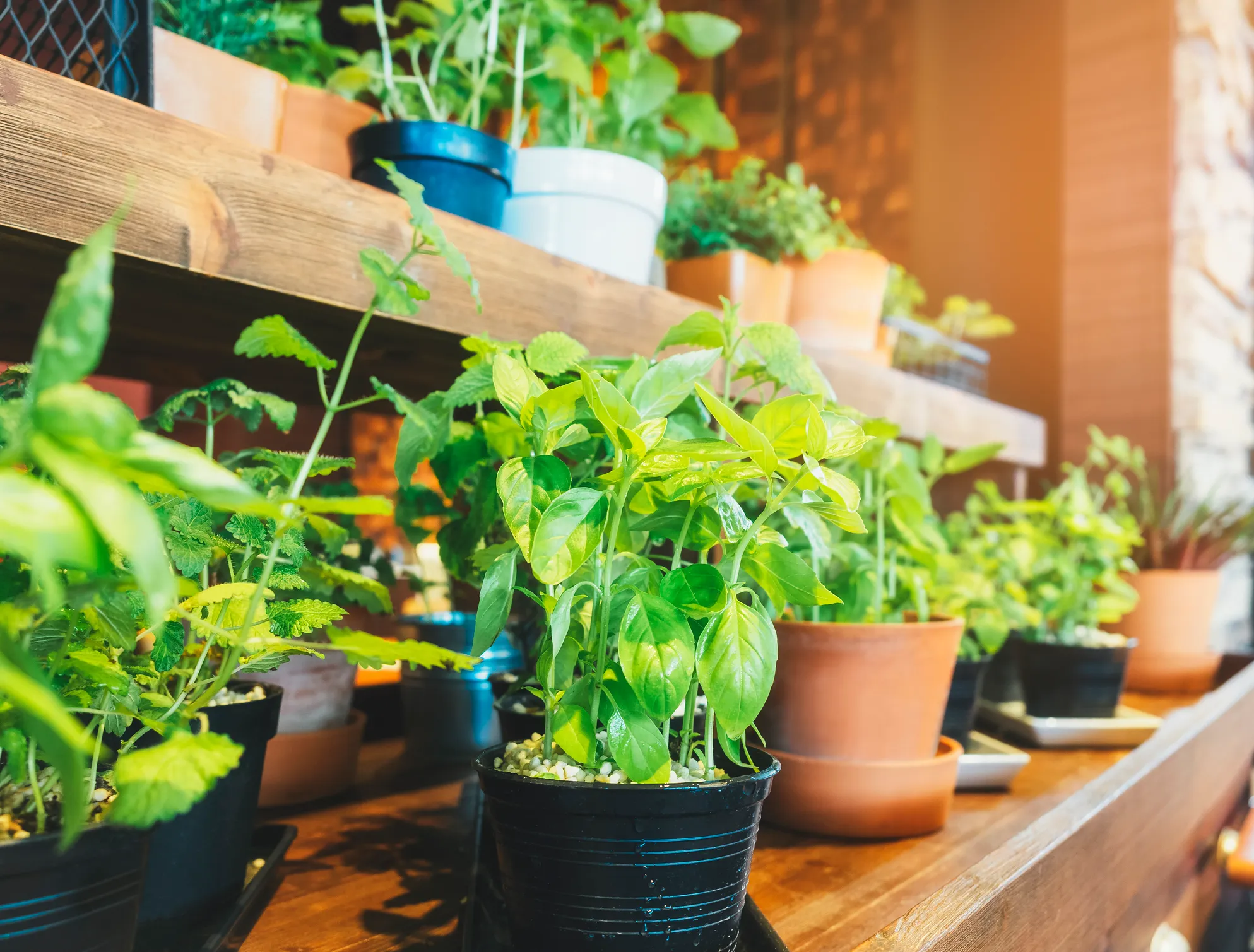

Articles
How To Start An Indoor Garden
Modified: January 18, 2024
Learn how to start an indoor garden with these informative articles. Discover tips, advice, and inspiration to create your own green oasis.
(Many of the links in this article redirect to a specific reviewed product. Your purchase of these products through affiliate links helps to generate commission for Storables.com, at no extra cost. Learn more)
Introduction
Welcome to the world of indoor gardening, where you can bring the beauty and benefits of nature right into your living space. Whether you have a small apartment or a spacious home, starting an indoor garden is a rewarding and fulfilling endeavor. Not only does it add a touch of greenery and freshness to your surroundings, but it also allows you to enjoy the therapeutic benefits of gardening all year round.
Indoor gardening has become increasingly popular in recent years, and for good reason. It offers a multitude of benefits, including improving indoor air quality, reducing stress, enhancing concentration, and boosting mood and well-being. Furthermore, growing your own plants and herbs indoors gives you the satisfaction of knowing exactly where your food and ingredients come from, promoting a healthier and more sustainable lifestyle.
Before diving into the world of indoor gardening, it’s important to understand the key factors that contribute to a successful and thriving indoor garden. From choosing the right plants to creating a suitable environment, there are several elements to consider. In this article, we will guide you through the process of starting your own indoor garden, providing you with valuable insights and practical tips along the way.
So, whether you have a green thumb or are just starting out on your gardening journey, get ready to embark on a delightful adventure through the world of indoor gardening. Let’s roll up our sleeves, grab our gardening tools, and sow the seeds of knowledge to cultivate a flourishing indoor garden.
Key Takeaways:
- Indoor gardening offers a multitude of benefits, from improving air quality to reducing stress. Choosing the right plants, providing proper lighting, and maintaining humidity levels are crucial for a successful indoor garden.
- Regular monitoring and care, along with harvesting and enjoying the fruits of your labor, are essential aspects of indoor gardening. Embrace the process, savor the rewards, and continue to cultivate your indoor garden with passion and care.
Read more: How To Start A Indoor Garden
Choosing the Right Plants
When it comes to indoor gardening, choosing the right plants is crucial for their overall health and success. Not all plants thrive indoors, as they require specific conditions to flourish. Consider the following factors when selecting plants for your indoor garden:
- Light Requirements: Different plants have different light requirements. Some thrive in bright, direct sunlight, while others prefer indirect or low-light conditions. Assess the lighting conditions in your space and choose plants accordingly. If you have limited natural light, consider investing in grow lights to provide supplemental lighting.
- Space Availability: Take into account the available space in your home when selecting plants. If you have limited space, opt for compact plants or vertical gardening options. On the other hand, if you have ample space, you can explore larger plants or create a dedicated plant corner.
- Care Level: Consider your level of gardening experience and the amount of time you can dedicate to plant care. Some plants require more attention and maintenance than others. If you’re a beginner or have a busy schedule, look for low-maintenance plants that are more forgiving in terms of watering and care requirements.
- Indoor Climate: Assess the indoor climate of your space, including temperature and humidity levels. Some plants prefer warm and humid conditions, while others thrive in cooler and drier environments. Ensure that the plants you choose are compatible with the climate in your home.
- Purpose of the Garden: Determine the purpose of your indoor garden. Are you looking to grow herbs for culinary purposes, create a serene and calming environment, or simply add decorative plants? Tailor your plant selection to align with your desired outcomes.
Some popular plant choices for indoor gardens include succulents, spider plants, pothos, peace lilies, snake plants, and herbs such as basil, mint, and rosemary. These plants are known for their adaptability to indoor environments and their ability to improve indoor air quality.
Research each plant’s specific care requirements, including watering frequency, fertilization needs, and any special considerations. This will ensure that you can provide the necessary care and create an ideal environment for your chosen plants.
By selecting the right plants for your indoor garden, you’ll set the foundation for a thriving and visually appealing space. It’s time to bring nature indoors and enjoy the endless benefits that indoor gardening has to offer.
Determining the Location
The location of your indoor garden plays a crucial role in the overall success of your plants. Finding the right spot that meets the needs of your chosen plants and fits seamlessly into your home is essential. Consider the following factors when determining the location for your indoor garden:
- Natural Light: Most plants require a significant amount of natural light to thrive. Observe the natural light patterns in your home and identify areas that receive ample sunlight throughout the day. South-facing windows usually provide the most intense light, while east and west-facing windows offer moderate light. North-facing windows often have the least amount of direct sunlight. Choose a location that receives the appropriate amount of light for your chosen plants.
- Temperature: The indoor temperature plays a vital role in the growth and development of your plants. Most indoor plants prefer temperatures between 60 to 75 degrees Fahrenheit (15 to 24 degrees Celsius). Avoid placing your plants in areas that experience extreme temperature fluctuations or drafts from doors, windows, or heating vents.
- Humidity: Indoor environments tend to have lower humidity levels, especially during the winter months when central heating is in use. Some plants thrive in higher humidity, so consider placing them in areas of the home with naturally higher moisture levels, such as the bathroom or kitchen. Alternatively, you can increase humidity by using a humidifier or placing a tray filled with water near your plants.
- Space Availability: Assess the available space in your home and choose a location that can accommodate the size and number of plants you wish to grow. Consider vertical gardening options or utilizing shelves to maximize space. Be mindful of the plants’ growth habits and provide ample room for them to spread out and thrive.
- Accessibility: Ensure that the chosen location is easily accessible for watering, maintenance, and monitoring. Avoid placing plants in hard-to-reach or cluttered areas, as this may lead to neglect or difficulties in caring for your plants.
Remember, each plant has specific environmental requirements, so it’s essential to choose a location that meets those needs. You may need to experiment and adjust the placement of your plants until you find the perfect spot where they can flourish.
Additionally, keep in mind that some plants may benefit from occasional rotation to ensure even exposure to light. Observing how your plants respond to their location and making necessary adjustments will help create an optimal environment for their growth and development.
By carefully determining the location for your indoor garden, you’ll create a well-suited and nurturing environment for your plants to thrive. Get ready to transform a corner of your home into a green oasis.
Gathering the Supplies
Before you can dive into the exciting world of indoor gardening, it’s important to gather the necessary supplies. Having the right tools and equipment on hand will make the process smoother and more enjoyable. Here are some essential supplies you’ll need to get started:
- Pots or Containers: Choose pots or containers that are suitable for the size and growth habit of your plants. Consider factors like drainage holes, material (such as ceramic, plastic, or clay), and aesthetic appeal. Ensure that the containers provide enough space for the roots to grow and have proper drainage to avoid waterlogging.
- Potting Soil: Invest in high-quality potting soil that is specifically formulated for indoor plants. Avoid using garden soil, as it might not provide the right balance of nutrients and drainage for potted plants. Look for soil mixes that are well-draining and have good moisture retention.
- Fertilizer: Indoor plants often require regular fertilization to thrive. Choose a balanced fertilizer suitable for indoor plants and follow the recommended application guidelines. Organic options like compost or fish emulsion can also be beneficial for plant growth.
- Watering Can or Sprayer: A watering can with a long spout or a sprayer will help you evenly distribute water and keep your plants hydrated. Consider the size of your indoor garden when selecting the watering tool. A mister or spray bottle is handy for plants that prefer higher humidity levels.
- Pruning Shears: Pruning shears or sharp scissors are essential for maintaining the health and appearance of your plants. Use them to remove dead or yellowing leaves, shape the plants, and promote new growth. Make sure to clean your pruning tools after each use to prevent the spread of diseases.
- Plant Labels: Keeping track of the names and care instructions for your plants is important, especially if you have multiple varieties. Use plant labels or small tags to identify each plant. This will help you remember their specific needs and provide proper care.
- Support Stakes or Trellises: Some plants, such as vining or climbing varieties, may require support stakes or trellises to help them grow upright. Check the growth habit of your plants and provide the necessary support to prevent them from bending or breaking.
- Cleaning Supplies: Keeping your indoor garden clean is essential for preventing pests and diseases. Have some cleaning supplies, such as a small brush or soft cloth, to dust off plant leaves and remove dirt or debris.
Additionally, consider investing in a humidity monitor, a hygrometer, to keep track of the humidity levels in your indoor garden. This will help you adjust and maintain an optimal environment for your plants.
Check with local garden centers or online retailers for these supplies. Keep in mind your specific needs and the requirements of your chosen plants. With these essential supplies in hand, you’ll be well-prepared to embark on your indoor gardening journey.
Preparing the Containers
Once you have gathered all the necessary supplies, it’s time to prepare the containers for your indoor garden. Properly preparing the containers will ensure that your plants have a healthy and suitable environment to grow and thrive. Here are some steps to follow:
- Cleaning: Before planting in a new container or reusing an existing one, it’s important to clean it thoroughly. Wash the container with warm soapy water and rinse it well to remove any dirt, dust, or residue. This helps prevent the spread of pests, diseases, and harmful bacteria.
- Drainage: Proper drainage is crucial to prevent waterlogged roots, which can lead to root rot. Check that your containers have sufficient drainage holes at the bottom. If necessary, drill additional holes to ensure proper water drainage. You can also place a layer of small rocks or pebbles at the bottom of the container to help improve drainage.
- Adding a Saucer: Place a saucer or tray below each container to catch excess water that drains out. This helps prevent water from damaging surfaces and keeps your indoor garden area clean and tidy.
- Soil Preparation: Fill the container with the appropriate potting soil, leaving a few inches of space at the top to prevent overflow when watering. Gently pat down the soil to remove any air pockets. Ensure that the soil level is suitable for the plant you are about to transplant or sow.
- Pre-Moistening the Soil: Before planting your seeds or transplanting the plants, it’s important to pre-moisten the soil. This ensures that the roots have access to moisture right from the beginning. Use a watering can or sprayer to gently moisten the soil without saturating it.
- Spacing: Consider the spacing requirements of your plants when arranging them in the container. Leave enough space between each plant to allow for healthy growth. Overcrowding can lead to competition for resources and hinder proper development.
- Planting: Carefully transplant your seedlings or place your plant into the prepared container, making sure the roots are covered with the potting soil. Gently press the soil around the plant to secure it in the container.
- Labeling: As you plant each container, label them with the plant’s name or variety. This will help you keep track of your plants and their specific care requirements.
Once all your containers are prepared and the plants are planted, place them in their designated location, ensuring they receive the appropriate amount of light and are away from any extreme temperature fluctuations.
Remember to water your newly planted containers gently and avoid overwatering. Monitor the moisture level of the soil regularly and adjust your watering routine as needed to provide the right amount of water for your plants.
By properly preparing your containers, you are setting the stage for healthy plant growth and ensuring a successful indoor gardening experience. Get ready to watch your plants thrive and create a beautiful green space within your home.
Read more: When To Start An Indoor Garden
Soil and Fertilizer
The soil you use in your indoor garden plays a vital role in providing the necessary nutrients and support for plant growth. Additionally, fertilizers can supplement the soil and promote healthy development. Let’s explore the importance of soil and fertilizer for your indoor garden:
Soil:
Choosing the right potting soil is crucial for the overall success of your indoor plants. Here are some important considerations:
- Quality: Look for high-quality potting soil that is specifically formulated for indoor plants. These blends are well-draining, lightweight, and enriched with essential nutrients.
- Drainage: Proper drainage is essential to prevent waterlogged roots. Ensure that the potting soil has good drainage properties, allowing excess water to flow through easily. Avoid using garden soil, as it may become compacted and hinder root growth.
- Moisture Retention: The potting soil should have good moisture retention capabilities to ensure that plants receive adequate hydration between waterings. It should strike a balance between retaining moisture and allowing excess water to drain away.
- pH Level: Different plants prefer different levels of acidity or alkalinity in the soil. Check the pH requirements of your plants and adjust the soil pH if necessary. Most indoor plants thrive in slightly acidic to neutral soil (pH 6-7).
- Aeration: A well-aerated soil allows roots to breathe and absorb necessary nutrients. Look for potting soil that contains perlite or vermiculite, which improve aeration and help maintain proper soil structure.
Fertilizer:
Fertilizers provide supplemental nutrients to support healthy growth and development of your indoor plants. Here are important points to consider:
- Nutrient Requirements: Different plants have varying nutrient requirements. Some may require higher levels of nitrogen for leafy growth, while others may need more phosphorus and potassium for flowering and fruiting. Select a fertilizer that matches the specific needs of your plants.
- Fertilizer Types: There are two main types of fertilizers: organic and synthetic. Organic fertilizers are derived from natural sources and release nutrients slowly over time. Synthetic fertilizers are chemically formulated and provide nutrients more quickly. Choose the type that aligns with your preferred gardening methods.
- Application Frequency: Follow the recommended application guidelines provided by the fertilizer manufacturer. Avoid over-fertilizing, as excessive nutrients can cause damage to your plants. It’s better to under-fertilize than to overdo it.
- Application Technique: Apply the fertilizer evenly around the base of the plants, taking care not to let it come into direct contact with the leaves or stems. Water the plants after fertilization to help nutrients reach the root zone.
- Organic Alternatives: If you prefer an organic approach, there are natural alternatives for fertilizing your indoor plants. Compost, worm castings, and diluted organic tea solutions can provide beneficial nutrients to your plants.
Regularly monitor your plants for signs of nutrient deficiencies or excesses. Adjust your fertilization routine as needed to ensure that your plants receive the proper nutrients for optimal growth.
Remember, soil and fertilizers are essential components of your indoor gardening success. By selecting a quality potting soil and providing the right nutrients through fertilization, you’ll create an environment that promotes healthy, vibrant plants in your indoor garden.
Planting and Watering
Planting and watering are fundamental aspects of caring for your indoor garden. Proper techniques ensure that your plants have the best chance of thriving and staying healthy. Let’s explore the key considerations for planting and watering your indoor plants:
Planting:
- Transplanting: If you are transplanting a plant from a smaller container, gently remove it from its current pot and carefully loosen the root ball. Place the plant in the prepared container, ensuring the top of the root ball is level with or slightly below the soil surface. Backfill with additional soil, firmly pressing it around the roots.
- Sowing Seeds: If you are starting from seeds, follow the instructions on the seed packet for proper planting depth and spacing. Gently press the seeds into the soil and cover them with a layer of soil as recommended.
- Watering After Planting: After planting, give the plants a thorough watering to settle the soil and help establish their roots. Ensure the soil is evenly moist but not saturated. Avoid overwatering, as it can lead to root rot.
Watering:
- Consistency: Consistent watering is essential for healthy plant growth. Monitor the moisture level of the soil by inserting your finger about an inch deep. Water your plants when the top inch of the soil feels dry to the touch.
- Watering Techniques: Use a watering can or sprayer to water your plants, aiming for the base of the plants rather than their foliage. This helps prevent the development of fungal diseases and ensures that the water reaches the roots.
- Quantity: Water your plants thoroughly until water drains out from the bottom of the container. This ensures that the entire root system receives adequate hydration. Avoid shallow watering, as it can lead to weak and shallow root growth.
- Watering Schedule: The frequency of watering depends on factors such as the type of plant, container size, temperature, humidity, and the rate at which the soil dries out. Rather than adhering to a strict schedule, always assess the moisture level of the soil before watering.
- Water Quality: Ensure that the water you use is of good quality, free from contaminants or harmful chemicals. If your tap water contains chlorine or fluoride, let it sit for 24 hours before using it for watering to allow the chemicals to dissipate.
- Drainage: Adequate drainage is crucial to prevent waterlogged roots. Ensure that your plant containers have drainage holes and that excess water can flow freely out of the container. If water accumulates in the saucer, empty it to prevent the plants from sitting in standing water.
Remember to observe your plants closely and adjust your watering routine based on their specific needs. A general guideline is to aim for consistent, even moisture in the soil, allowing it to dry out slightly between waterings.
Some plants have specific watering requirements, such as those that prefer drier conditions or those that thrive in high humidity. It’s important to research the specific needs of your plants to provide the optimal watering environment.
By mastering the art of planting and watering, you’ll lay the groundwork for healthy and thriving plants in your indoor garden. Enjoy the satisfaction of nurturing and caring for your green companions!
Start with easy-to-grow plants like herbs or succulents. Choose a sunny spot, use well-draining soil, and water regularly. Research each plant’s specific care needs for best results.
Providing Proper Lighting
Light is one of the most crucial factors in the success of indoor gardening. Providing proper lighting ensures that your plants can carry out photosynthesis effectively, promoting healthy growth and development. Here are key considerations to provide the right lighting for your indoor garden:
Natural Light:
- Assessing Natural Light: Observe the natural light patterns in your home to determine the best spots for your plants. South-facing windows typically receive the most intense sunlight throughout the day, while east and west-facing windows offer moderate light. North-facing windows receive the least amount of direct sunlight.
- Matching Plant Needs: Different plants have varying light requirements. Some thrive in bright, direct sunlight, while others prefer indirect or low-light conditions. Consider the light preferences of your plants and place them accordingly.
- Rotating Plants: If you have limited natural light, consider rotating your plants regularly to ensure even exposure. This prevents plants from leaning towards the light source and encourages balanced growth.
Supplemental Lighting:
- Grow Lights: If you don’t have access to sufficient natural light, or if you want to provide consistent light throughout the day, you can invest in grow lights. LED grow lights are energy-efficient, emit little heat, and provide a full spectrum of light that mimics natural sunlight.
- Choosing Grow Lights: Select the right type of grow lights based on the needs of your plants. Full-spectrum lights are ideal as they provide the complete range of light wavelengths necessary for photosynthesis. Red and blue spectrum lights are essential for vegetative growth and flowering, respectively.
- Positioning Grow Lights: Hang or position the grow lights at an appropriate distance above the plants. This ensures that the light is evenly distributed and prevents plants from getting too close, which can cause heat stress or light burn. Follow the manufacturer’s guidelines for recommended distance and duration of light exposure.
- Light Duration: Most plants require around 10 to 14 hours of light per day to thrive. Set a timer for your grow lights to ensure consistent and appropriate light exposure for your plants.
Keep in mind that each plant has specific light requirements, so it’s crucial to research and understand the needs of your plants. Some plants may tolerate lower light conditions, while others may require intense light to grow and flower successfully.
Regularly observe your plants for signs of light deficiency or excess. Symptoms of inadequate light include leggy growth, pale leaves, and the plant leaning towards the light source. On the other hand, signs of excess light may include leaf scorch or yellowing leaves. Adjust the lighting conditions and placement of your plants accordingly if needed.
By providing proper lighting, whether through natural light or supplemental grow lights, you’ll create an ideal environment for your indoor plants to thrive and reach their full potential.
Maintaining Humidity Levels
Humidity, or the amount of moisture in the air, is an important factor to consider when caring for your indoor garden. Maintaining proper humidity levels can significantly impact the growth and overall health of your plants. Here are some tips to help you maintain optimal humidity for your indoor garden:
- Understanding Plant Preferences: Different plants have varying humidity preferences. Some plants, like tropical varieties, thrive in higher humidity levels, while others, such as succulents, prefer drier conditions. Research the specific humidity requirements of your plants to ensure their well-being.
- Grouping Plants: Grouping plants together can create a microclimate with increased humidity. As plants transpire, they release moisture into the surrounding air. By clustering plants together, you can create a more humid environment for those that prefer higher humidity.
- Misting: Misting your plants with water can temporarily increase humidity levels. Use a spray bottle filled with room temperature water to mist the leaves of your plants. Pay attention to plants that benefit from higher humidity, such as tropical plants or those with foliage that tends to dry out quickly.
- Pebble Trays: Placing a tray filled with water and pebbles near your plants can help increase humidity. As the water evaporates, it creates moisture in the surrounding air. Just make sure the bottom of the plant containers is not submerged in water, as this could lead to overwatering and root rot.
- Humidifiers: Investing in a humidifier is an effective way to control and maintain consistent humidity levels in your indoor garden. Choose a humidifier size that suits the dimensions of your space. Run the humidifier as needed, and adjust the humidity level based on the requirements of your plants.
- Bathroom or Kitchen: Rooms such as bathrooms or kitchens tend to have naturally higher humidity levels due to activities like showering or cooking. Consider placing humidity-loving plants in these areas to take advantage of the existing moisture in the air.
It’s important to strike a balance when it comes to humidity. While some plants thrive in high humidity, excessive moisture can lead to fungal and bacterial diseases. On the other hand, low humidity can cause issues like wilting and leaf browning.
Regularly monitor the humidity levels in your indoor garden using a hygrometer, and make adjustments as needed. Aim for a humidity range that suits your specific plants, typically around 40% to 60% humidity. However, certain plants may require higher or lower levels, so be sure to cater to their specific needs.
Maintaining proper humidity levels adds an extra layer of care and ensures that your indoor garden flourishes in an environment that mimics their natural habitat.
Read more: How To Start An Indoor Garden For Beginners
Controlling Temperature
Temperature plays a critical role in the health and growth of your indoor garden. Different plants have specific temperature requirements, and maintaining the ideal temperature range can contribute to their overall well-being. Here are some tips to help you control the temperature in your indoor garden:
- Optimal Temperature Range: Research the temperature preferences of your plants to determine the ideal range. Most indoor plants thrive in temperatures between 60 to 75 degrees Fahrenheit (15 to 24 degrees Celsius). However, certain plants may tolerate slightly higher or lower temperatures. Tailor your indoor environment to meet the specific needs of your plants.
- Avoid Temperature Fluctuations: Sudden or extreme temperature fluctuations can stress your plants and hinder their growth. Avoid placing your plants in areas with drafts from doors or windows, or direct exposure to heating or cooling vents. Maintain a consistent temperature as much as possible.
- Temperature Adjustments: Pay attention to the temperature variations in different areas of your home. If certain rooms become too cold or too hot for your plants, consider relocating them to a more suitable spot or adjusting the indoor climate using heating or cooling devices.
- Heaters and Fans: Use heaters during colder months to maintain a stable and warm environment for your plants. Ensure that the heaters are not placed too close to the plants to prevent overheating or drying out. Likewise, fans or air circulation devices can be used during warmer months to improve air movement and prevent stagnant heat.
- Thermal Shields: If you have plants placed near windows or areas exposed to direct sunlight, consider using thermal shields or blinds to prevent overheating. These shields can help diffuse the intensity of the sunlight, protecting your plants from excessive heat.
- Monitor Temperature: Keep track of the temperature in your indoor garden using a thermometer. Place the thermometer near your plants at their typical height to get an accurate reading of the environment they are experiencing. Regularly check and make adjustments as needed.
- Use Temperature-Controlled Devices: Consider investing in temperature-controlled devices, such as thermostats or smart home systems, to easily monitor and regulate the temperature in your indoor garden. These devices can help maintain consistent temperature levels, especially if you have a larger or more complex indoor gardening setup.
By controlling the temperature in your indoor garden, you create an environment that promotes healthy growth and minimizes stress on your plants. Remember to consider the specific temperature preferences of each plant, and make adjustments accordingly to ensure their optimal conditions.
Pest and Disease Control
While indoor gardens are generally more protected from pests and diseases compared to outdoor gardens, it is still possible for unwanted visitors and various plant diseases to affect your plants. Implementing preventive measures and promptly addressing any pest or disease issues will help keep your indoor garden healthy and thriving. Here are some tips for pest and disease control in your indoor garden:
- Inspect Regularly: Conduct regular inspections of your plants to catch any signs of pests or diseases early on. Look for physical damage, discoloration, wilting, abnormal growth, or presence of insects.
- Quarantine New Plants: When bringing new plants into your indoor garden, isolate them for a period of time before placing them near your existing plants. This allows you to monitor them for any signs of pests or diseases before they can spread to other plants.
- Promote Plant Health: Strong and healthy plants are less susceptible to pests and diseases. Ensure that your plants receive appropriate lighting, water, and nutrients. Avoid overwatering or overfertilizing, as it can weaken plants and make them more prone to issues.
- Proper Watering Techniques: Water your plants at the soil level, avoiding getting water on the leaves. Wet foliage can create a breeding ground for pests and fungal diseases. Ensure that your plants have sufficient time to dry out between waterings.
- Improve Air Circulation: Promote good air circulation around your plants. Stagnant air can lead to increased humidity, creating favorable conditions for pests and diseases. Use fans or open windows periodically to improve ventilation.
- Remove Infected Plants or Leaves: If you notice any signs of pests or diseases, promptly remove the affected plants or leaves from your indoor garden. This will help prevent further spread and allow you to focus on treating the issue before it worsens.
- Natural Pest Control: Use natural methods to control pests in your indoor garden. For example, introduce beneficial insects like ladybugs or lacewings that feed on pests, or use organic sprays and solutions made from ingredients like neem oil or insecticidal soap.
- Disease Prevention: Avoid overcrowding your plants, as this can promote the spread of diseases. Disinfect your gardening tools regularly to prevent cross-contamination between plants. Additionally, ensure proper drainage to prevent waterlogged roots, which can lead to root rot and other fungal diseases.
- Consult Experts: If you encounter persistent pest or disease issues that you are unable to control, don’t hesitate to seek advice from local gardening experts or professionals who can provide specialized guidance for your specific situation.
Remember, prevention is key when it comes to pest and disease control. Maintaining a vigilant and proactive approach will help keep your indoor garden healthy, vibrant, and free from unnecessary infestations or illnesses.
Regular Monitoring and Care
Ongoing monitoring and care are essential for the success of your indoor garden. Regular attention allows you to detect any issues early on and provide the necessary care to promote healthy growth. Here are some tips for regular monitoring and care of your indoor plants:
- Observation: Take the time to observe your plants regularly. Look for any changes in appearance, such as wilting, yellowing leaves, or pests. Monitor the growth and overall health of your plants to identify any potential problems.
- Watering: Adjust your watering schedule based on the moisture levels of the soil. Use your finger to check the top inch of soil – if it feels dry, it’s time to water. Avoid overwatering, as it can lead to root rot, but ensure that your plants receive adequate hydration.
- Fertilization: Follow the recommended fertilization schedule and application guidelines for your plants. Pay attention to any signs of nutrient deficiencies, such as yellowing leaves, and adjust your fertilization routine as needed.
- Pruning and Grooming: Regularly check your plants for dead or damaged leaves and remove them carefully using pruning shears or sharp scissors. Grooming your plants by removing spent flowers or trimming back leggy growth helps maintain their overall appearance and redirects energy towards healthy growth.
- Dusting: Dust can accumulate on plant leaves, inhibiting photosynthesis and potentially attracting pests. Gently wipe down the leaves with a soft, damp cloth or use a soft brush to remove dust regularly. This not only enhances the plant’s ability to absorb light but also keeps them looking clean and vibrant.
- Support as Needed: Monitor the growth of your plants and provide support, such as stakes or trellises, for taller or vining varieties. This will help prevent them from bending or breaking under their own weight.
- Rotate Plants: Take the opportunity to rotate your plants periodically. This ensures that each side receives adequate light exposure and prevents your plants from leaning towards a light source. Rotating them also allows for more uniform growth and appearance.
- Avoiding Cold Drafts: Protect your plants from cold drafts or sudden temperature fluctuations. Avoid placing them near open windows or doors during colder months, as drafts can stress or damage your plants.
- Keep Records: Maintain a gardening journal or record important information about your plants, such as their names, care instructions, and any issues or observations. This helps you track their progress, identify patterns, and make adjustments to your care routine over time.
- Learn and Adapt: As you gain experience and knowledge about indoor gardening, continue to learn and adapt your practices. Stay informed about new care techniques, plant varieties, and potential challenges. Each plant is unique, so adjust your care routine to meet the specific needs of your plants.
Consistent monitoring and care allow you to stay connected with your plants and address any issues promptly. By dedicating time and attention to your indoor garden regularly, you’ll be rewarded with healthy, flourishing plants that bring joy and beauty to your living space.
Harvesting and Enjoying the Fruits of Your Labor
After weeks or months of diligent care, it’s time to reap the rewards of your indoor garden. Harvesting the fruits, herbs, or vegetables you’ve nurtured from seed to maturity is an exciting and satisfying moment. Here are some tips for harvesting and enjoying the fruits of your labor:
- Know the Right Time: Research the optimal time to harvest each plant in your indoor garden. Look for cues such as color change, firmness, or size to determine when your crops are ready for picking. Each plant has its unique harvesting requirements.
- Use the Right Tools: Use appropriate tools such as shears, scissors, or pruning knives to harvest your plants. Ensure the tools you use are clean and sharp to make clean cuts and minimize damage to the plant.
- Harvesting Techniques: Harvest leafy greens and herbs by snipping off the outer leaves or stems, allowing the central portion to continue growing. For fruits or vegetables, carefully cut or twist them from the plant, taking care not to damage neighboring growth. Follow specific plant instructions for best results.
- Enjoy Freshness: Immediately after harvest, indulge in the freshness of your homegrown produce. Incorporate them into your meals, experiment with new recipes, or simply enjoy them in their natural state. Homegrown fruits, vegetables, and herbs often provide superior flavor and nutritional value compared to store-bought varieties.
- Preserve for Future Use: If you have a surplus of produce, consider preserving some for later use. Options include freezing, drying, pickling, or canning. These preservation techniques allow you to enjoy the taste of your indoor garden produce throughout the year.
- Share with Others: Spread the joy of your indoor garden by sharing your harvest with friends, family, or neighbors. It’s a wonderful opportunity to introduce others to the satisfaction and rewards of gardening and to showcase the delicious results of your efforts.
- Save Seeds: If you’re growing heirloom or open-pollinated plants, save seeds from your harvest for future seasons. Properly drying and storing seeds will ensure their viability and allow you to continue growing your favorite varieties year after year.
- Reflect and Learn: Take the time to reflect on your indoor gardening experience. Assess what worked well and what could be improved. Each harvest presents an opportunity to learn and refine your techniques for future success.
- Embrace the Process: Indoor gardening is not only about the end result but also the journey itself. Embrace the process, enjoy the therapeutic benefits, and take pride in the care and effort you’ve put into nurturing your indoor garden.
Remember, indoor gardening is a continuous cycle. After harvesting, you can start the process anew by planting new seeds or propagating from existing plants. The joy of growing and harvesting your own food or enjoying the beauty of indoor flowers is an ongoing source of fulfillment and satisfaction.
So savor the fruits of your labor, celebrate your accomplishments, and continue to cultivate your indoor garden with passion and care. Happy gardening!
Read more: How To Start An Herb Garden Indoors
Conclusion
Embarking on the journey of indoor gardening is a fulfilling and rewarding endeavor that allows you to bring the beauty of nature into the comfort of your own home. From choosing the right plants to creating an optimal environment, caring for your indoor garden offers numerous benefits for both your well-being and the aesthetics of your living space.
Throughout this article, we’ve explored the key aspects of starting and maintaining a successful indoor garden. From selecting the right plants based on their light and care requirements to determining the ideal location, each step contributes to the overall health and growth of your plants.
We discussed the importance of gathering the necessary supplies, preparing the containers, and ensuring proper soil and fertilization. These factors lay the foundation for a thriving indoor garden. Additionally, we looked into the significance of providing proper lighting, maintaining humidity levels, controlling temperature, and addressing pest and disease control. These aspects contribute to creating a suitable environment for your plants to thrive.
We also emphasized the importance of regular monitoring and care, involving tasks such as watering, pruning, grooming, and maintaining optimal growing conditions. By consistently observing and tending to your indoor garden, you ensure its long-term health and success.
Finally, we discussed the joy of harvesting the fruits of your labor and relishing in the freshness and flavors of your homegrown produce. Sharing the bounty with others and preserving the harvest for future enjoyment adds to the satisfaction of your indoor gardening experience.
Indoor gardening is a continuous learning process that allows you to connect with nature and nurture living organisms within the walls of your home. Cultivating an indoor garden brings beauty, tranquility, and a sense of accomplishment into your daily life.
So, whether you’re a seasoned gardener or just starting out, embrace the journey of indoor gardening. Take pleasure in the nurturing process, celebrate the growth and harvest, and continue to expand your knowledge and techniques. Your indoor garden will not only be a source of joy and fulfillment but also a living testament to the power of nature within your home.
Frequently Asked Questions about How To Start An Indoor Garden
Was this page helpful?
At Storables.com, we guarantee accurate and reliable information. Our content, validated by Expert Board Contributors, is crafted following stringent Editorial Policies. We're committed to providing you with well-researched, expert-backed insights for all your informational needs.
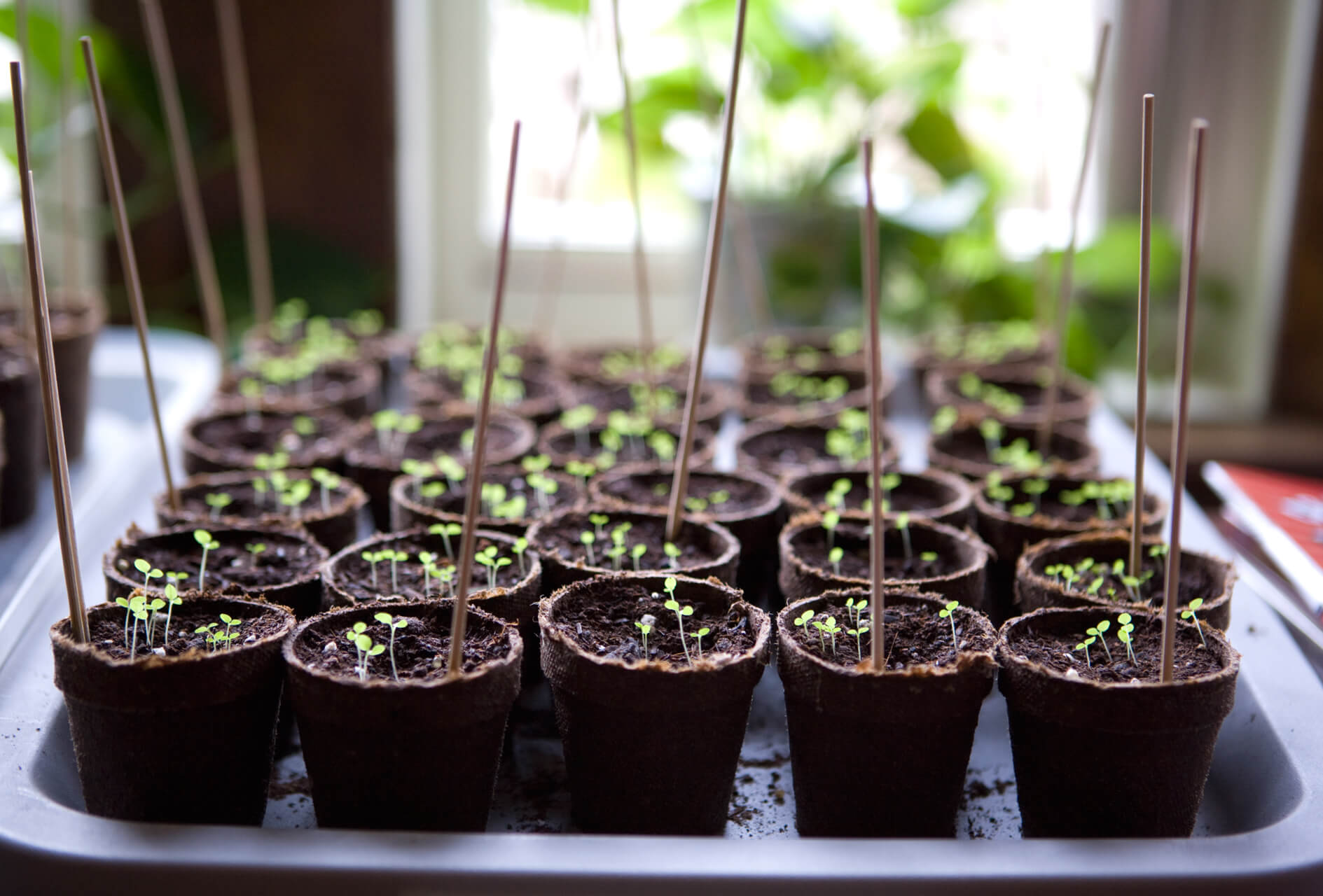
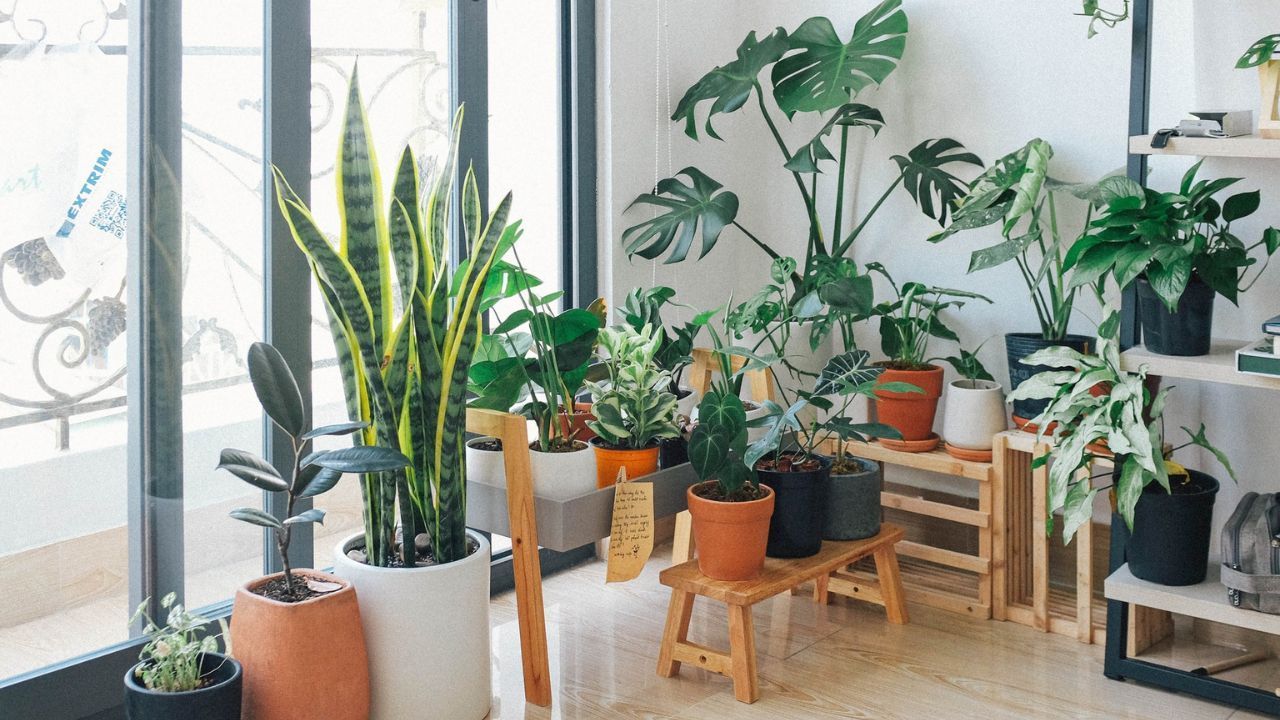
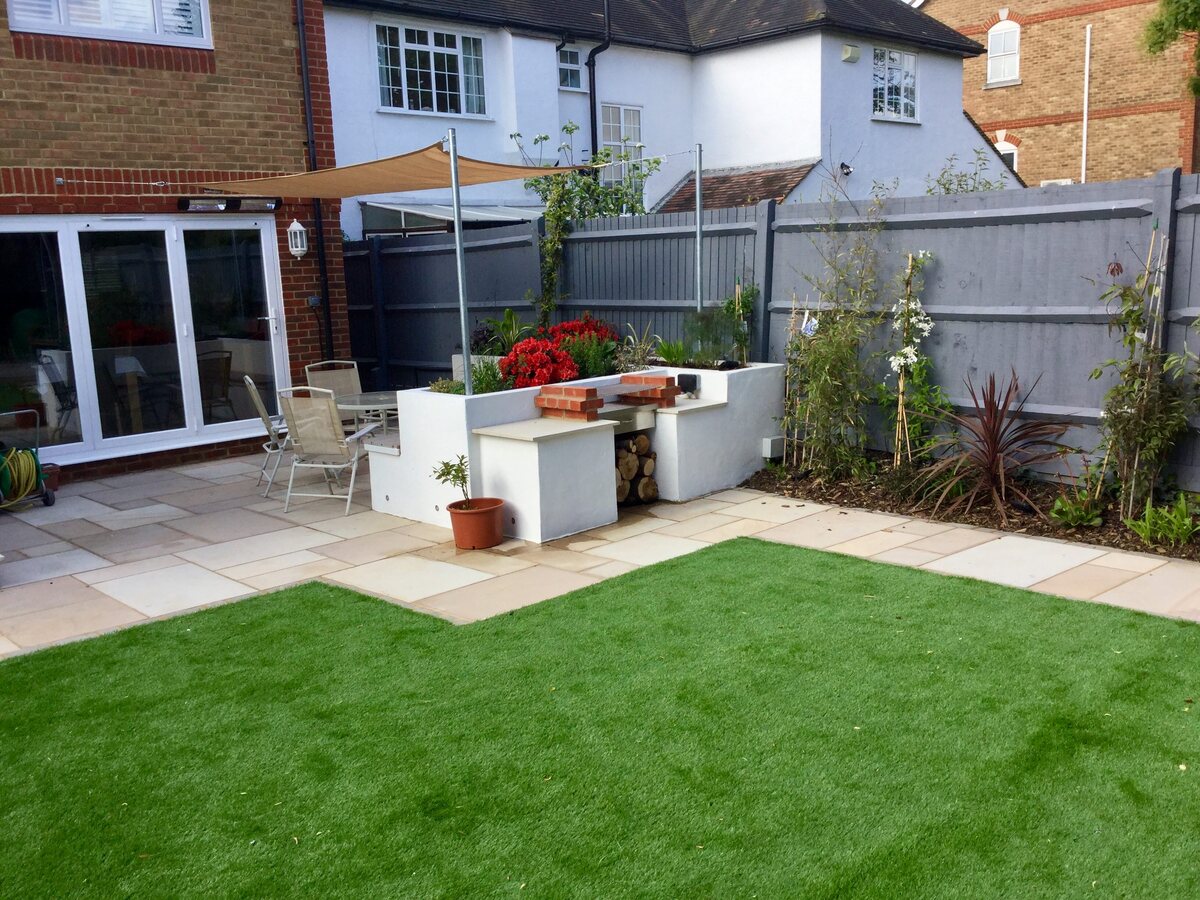
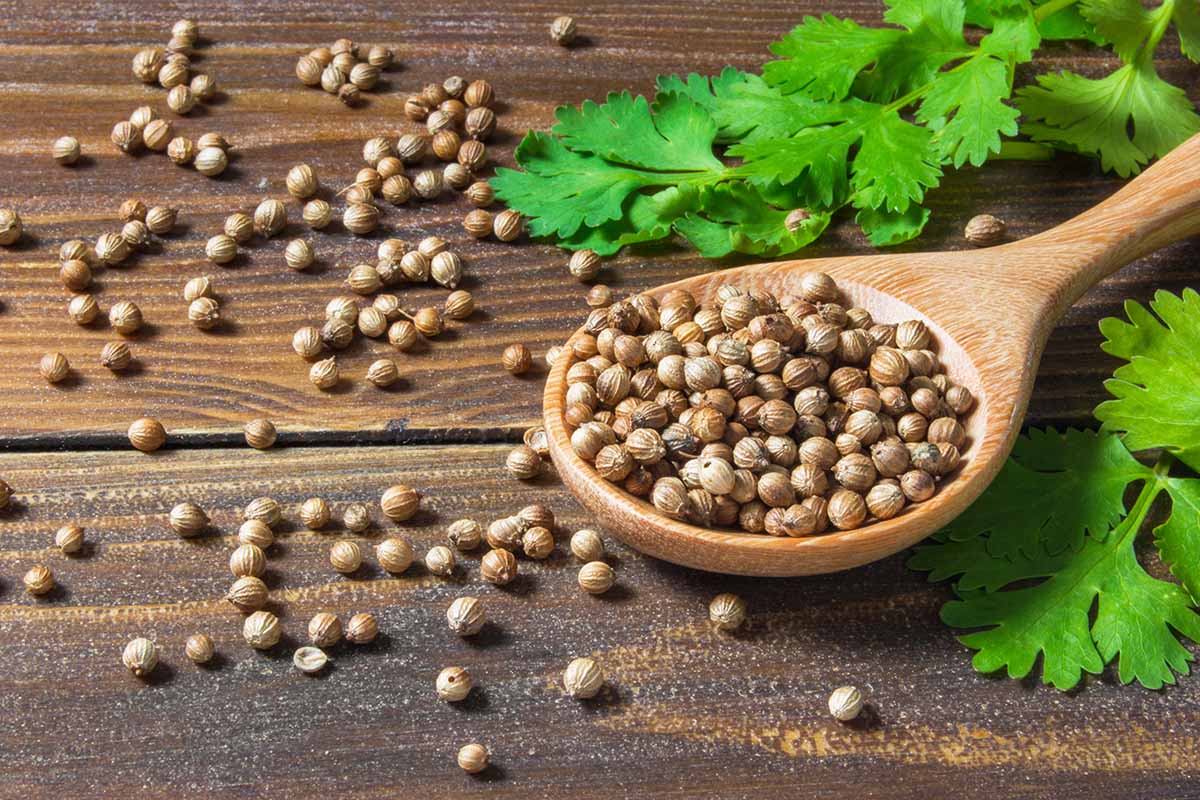
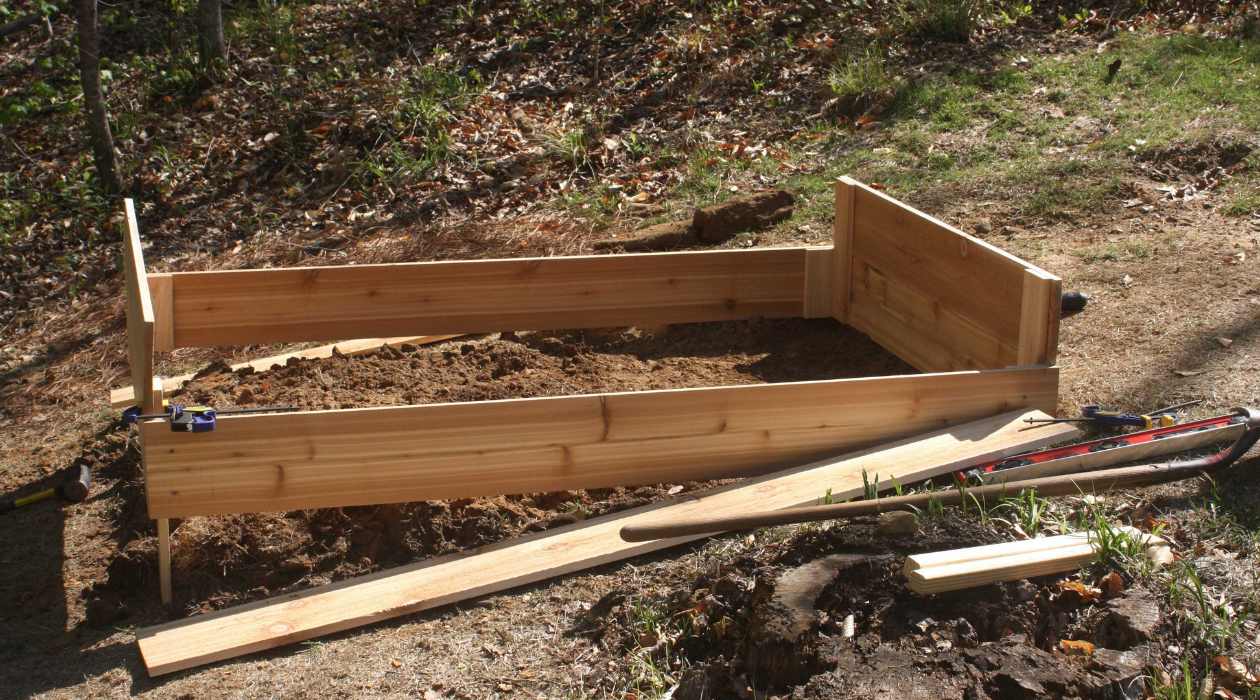
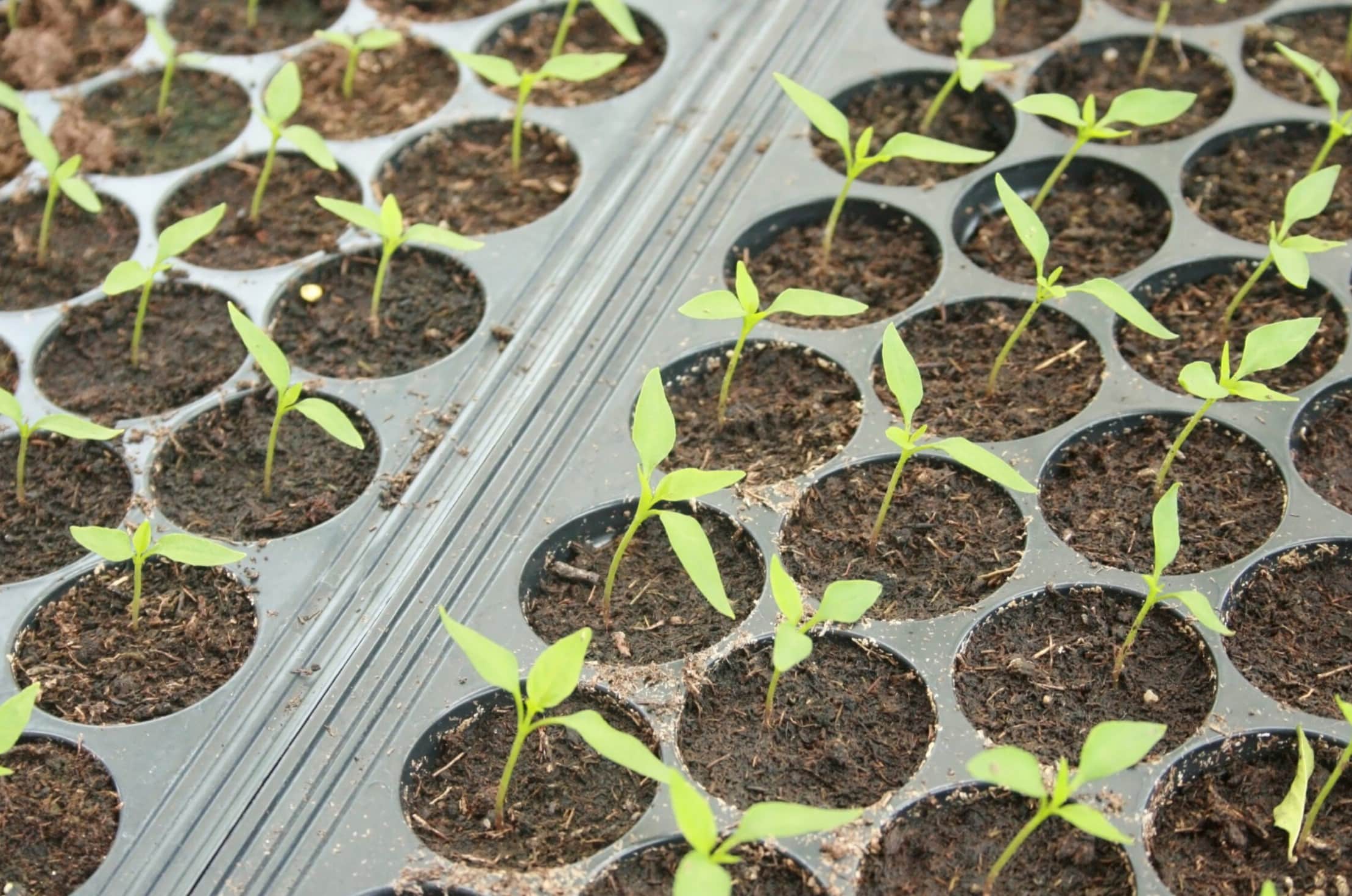
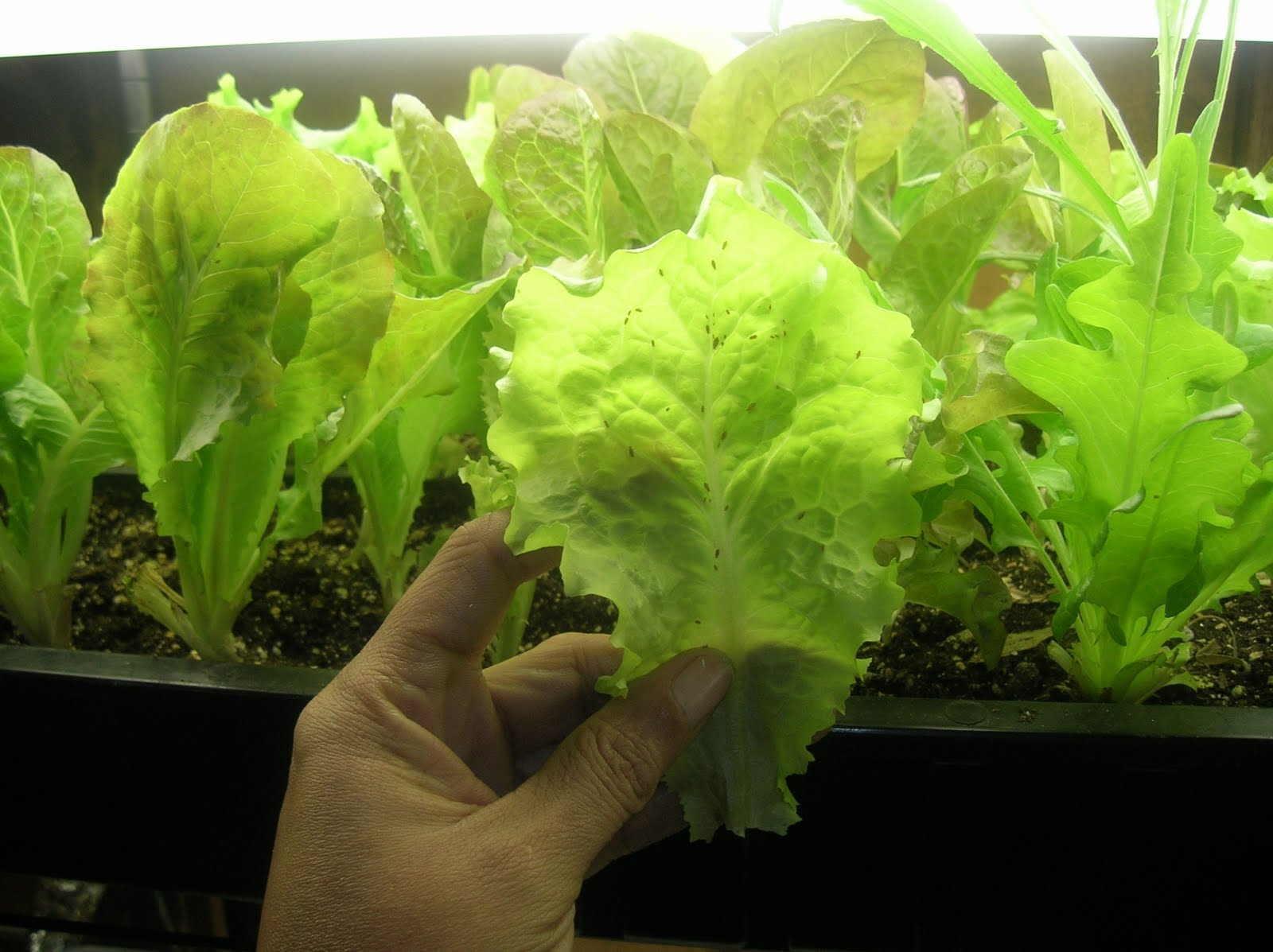
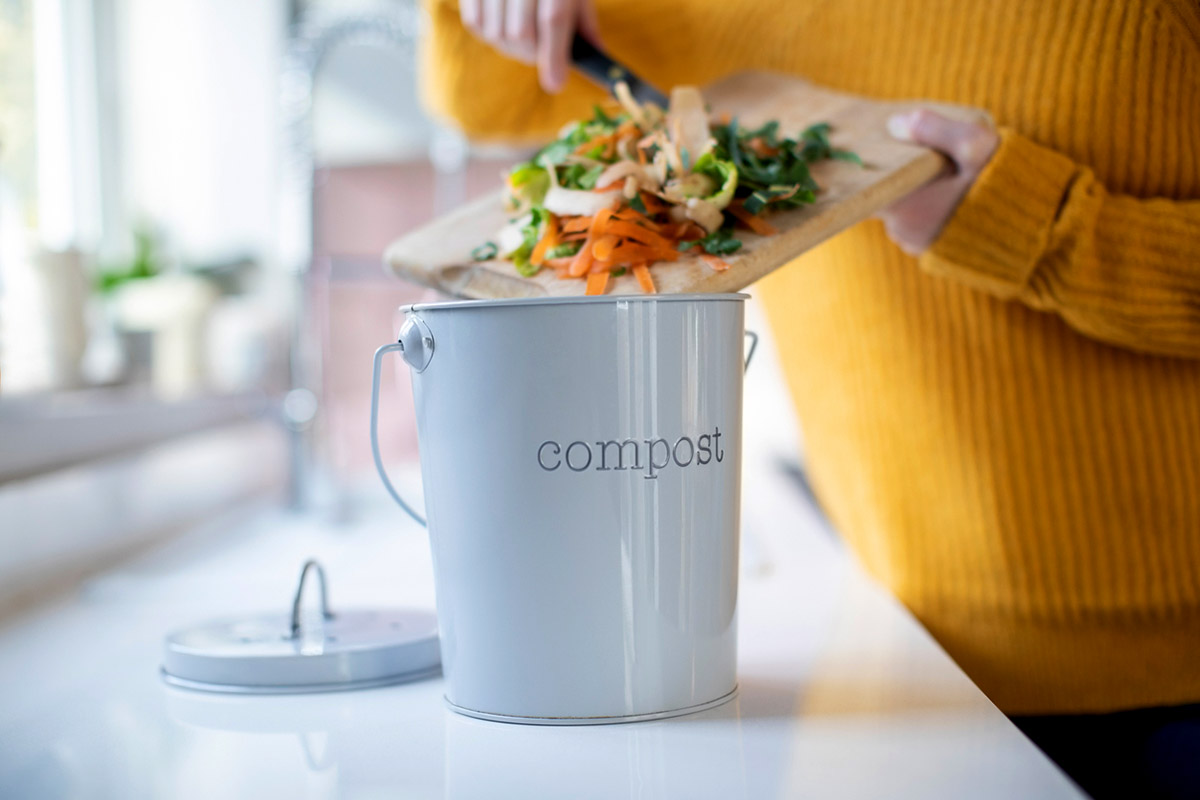
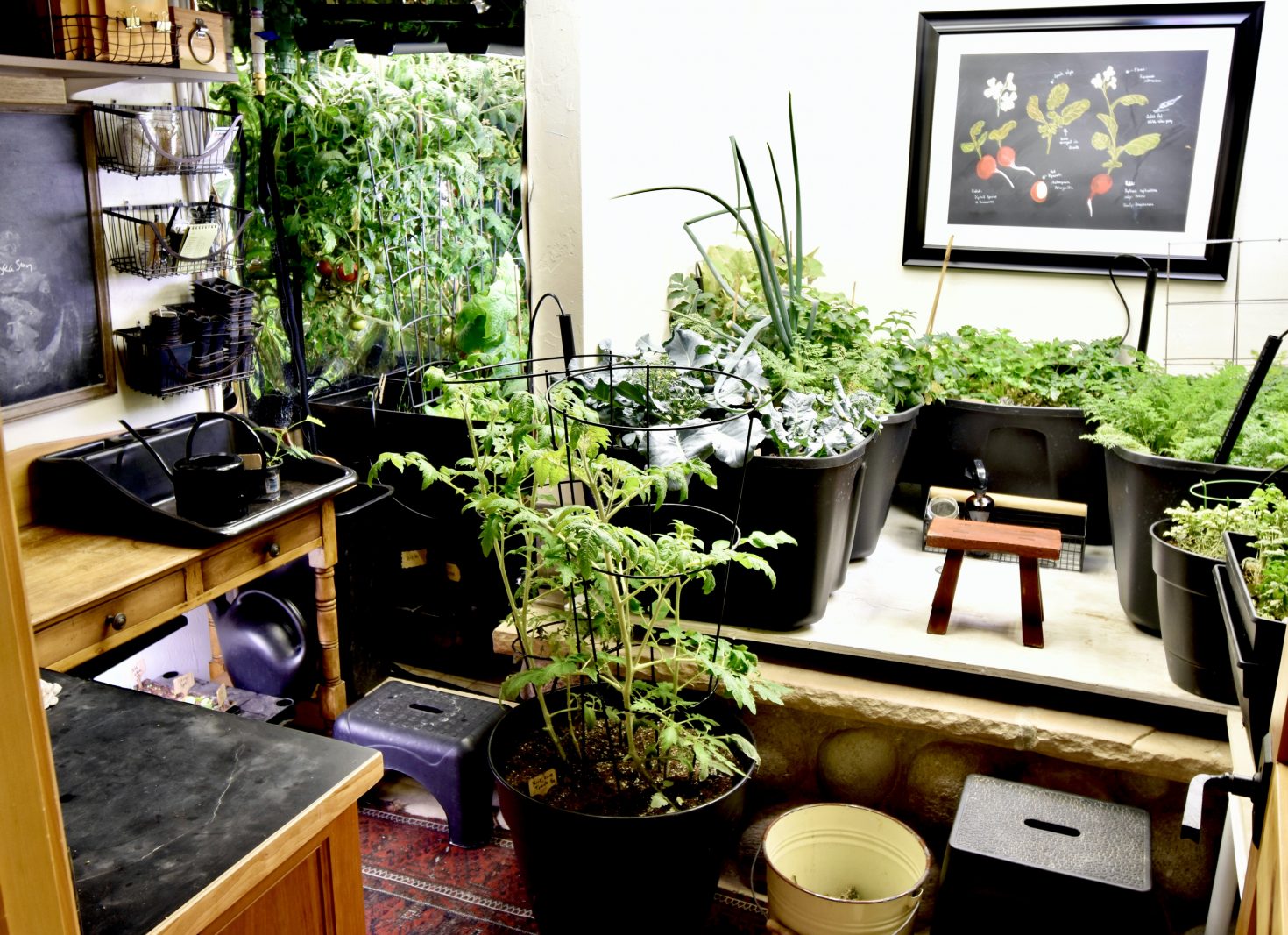

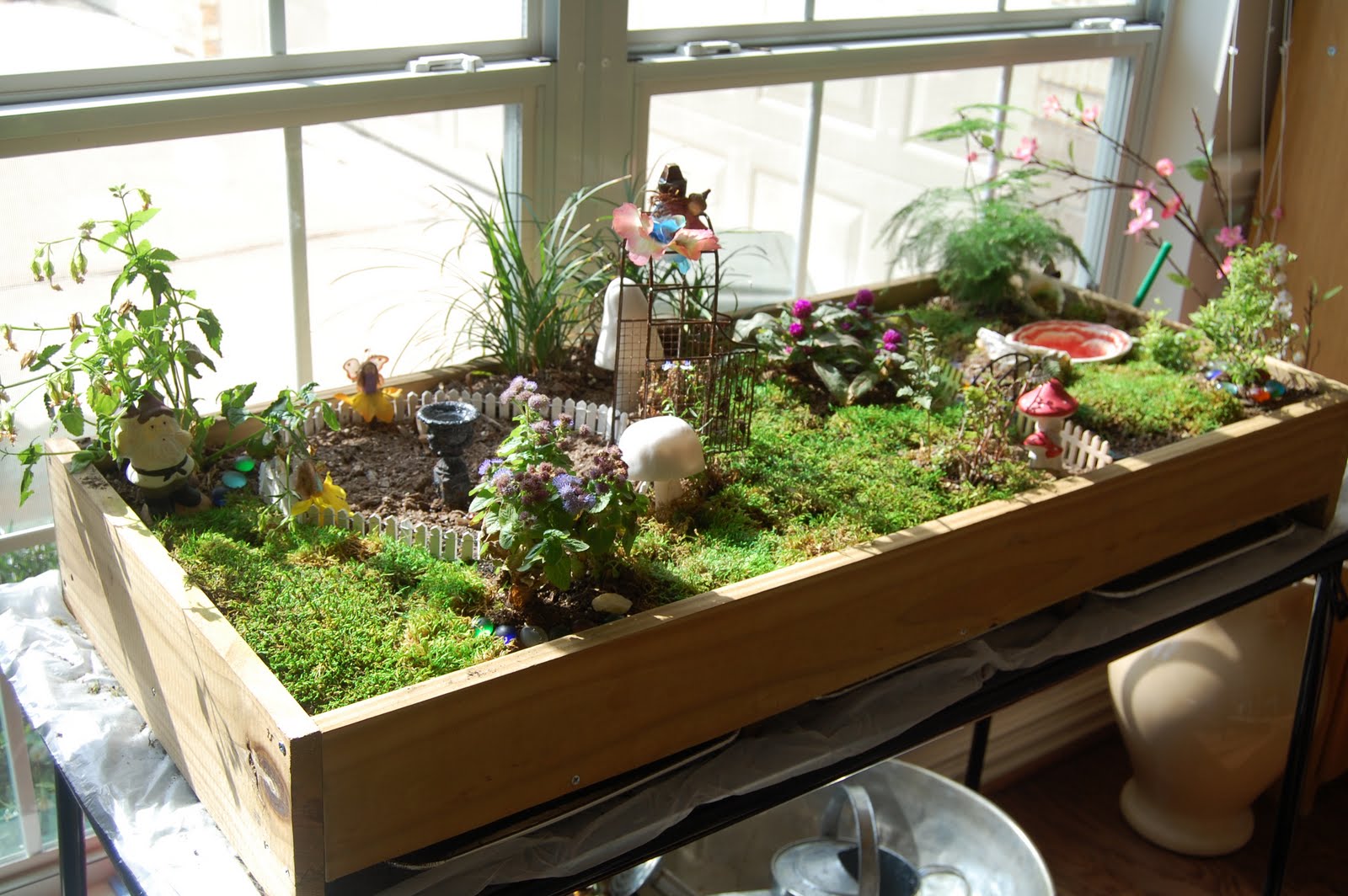
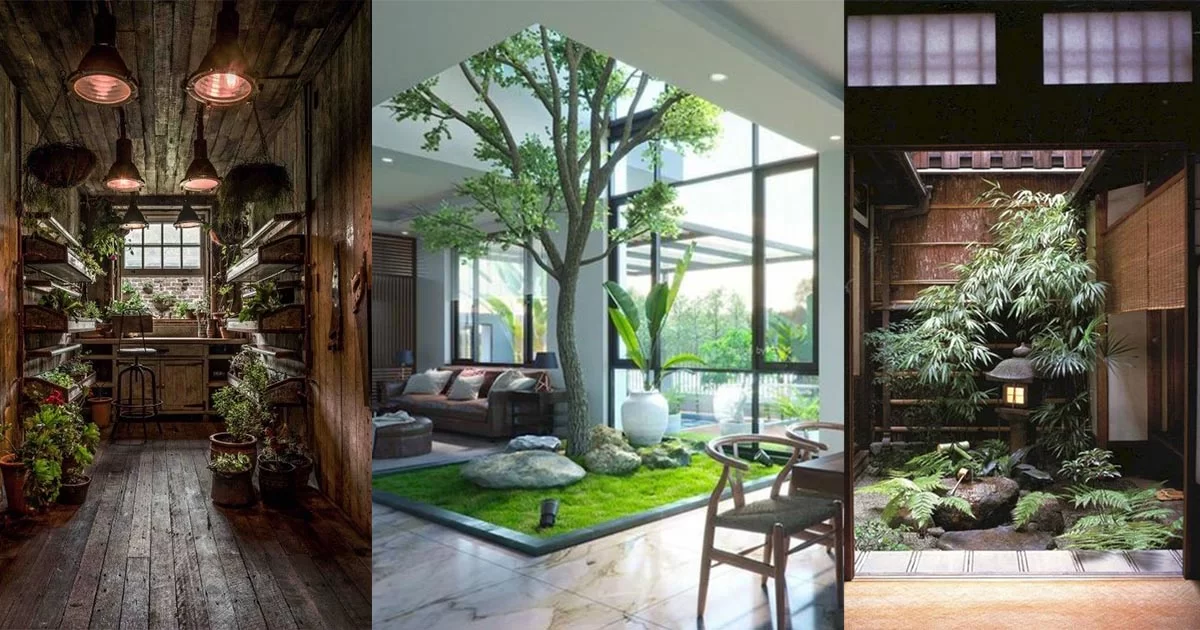

0 thoughts on “How To Start An Indoor Garden”